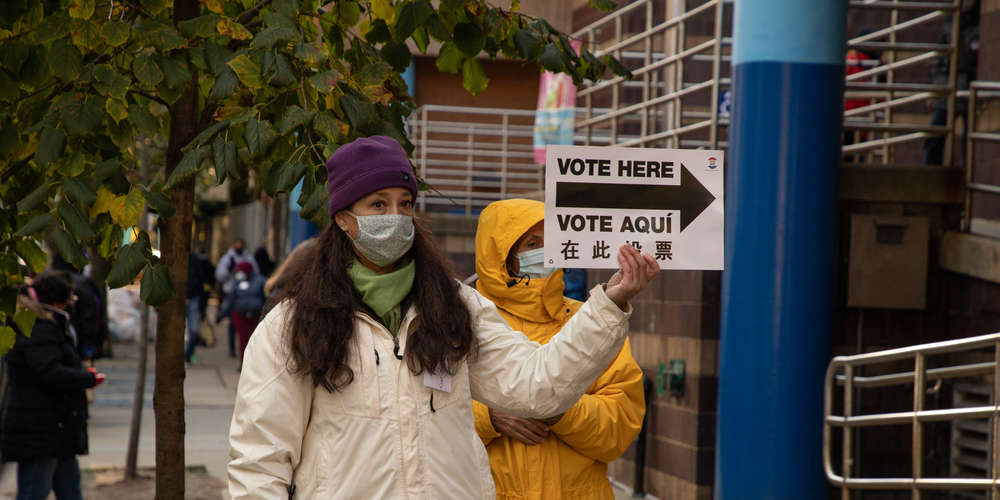Joe Biden is headed to the White House, and he has low-income voters to thank.
While higher-income voters swung further towards Donald Trump compared to four years ago, increased support from poor and low-income voters helped push the former vice president over the top.
According to early polls, voters with household incomes of less than $50,000 in 2019 broke for Biden by 55 to 43 percent — a 12 point margin, compared to 8 four years ago. This helped overcome Trump’s gains among households with incomes above $100,000 — from 45 percent in 2016 to just over half in 2020.
At least 6 million more people in low-income households voted in 2020 compared to 2016.
Many organizations across the country deserve credit for fighting voter suppression and boosting turnout among poor and low-income voters.
For example, the Poor People’s Campaign, along with Forward Justice and the NAACP Legal Defense Fund, trained hundreds of poll monitors in 10 states: Alabama, Georgia, Kentucky, Louisiana, Michigan, Mississippi, North Carolina, Pennsylvania, South Carolina, and Texas.
To protect people from intimidation and voter suppression, these nonpartisan poll monitors spread out across 100 polling sites, including in some low-income counties that had not had such monitors for decades.
In the weeks leading up to the election, the Poor People’s Campaign contacted over 2.3 million poor and low-income people, most of them in battleground states, to encourage them to vote. More than 400,000, or about 20 percent of those contacted, voted early.
For those who voted in person on election day, poll monitors played a critical role in addressing issues such as long lines, voter intimidation, voting machine malfunctions, polling site understaffing, and other obstacles.
According to the Poor People’s Campaign, poll monitors in their 10 target states successfully advocated for more than 20 polling sites to extend their hours due to late openings or other disruptions.
In others, the monitors worked with election officials to remove people engaging in voter intimidation (including armed individuals arriving at majority-Black voting locations) to protect the safety of voters and the sanctity of the vote.
In key battleground states such as Michigan, poor and low-income voters showed up in large numbers in support of Biden. According to the Associated Press, 54 percent of low-income Michiganders voted for the Biden-Harris ticket. Biden wound up winning the state with 50.6 percent of the vote.
Rev. Dr. Liz Theoharis, co-chair of the Poor People’s Campaign, pointed to the success of Florida’s ballot initiative to raise the minimum wage to $15 as another sign of the power of low-income voters and the broad appeal of a moral policy agenda to reduce poverty and inequality. More Floridians voted to raise the minimum wage than voted for either Biden or Trump, she noted.
Winning that agenda will, of course, take much more than an election.
“People did not turn out in record numbers in the midst of a pandemic to vote for a return to normal,” Poor People’s Campaign co-chair Rev. Dr. William J. Barber II, said. “We have elected Biden and Harris to use the power of government to lift up those who have been battered by COVID-19, battered by poverty, and battered by years of Republican extremism.”
The Poor People’s Campaign is already working to mobilize their members in 45 states to continue to raise up the key issues facing poor people. This will include caravans in these states on November 16 to demand a just relief package in the face of the pandemic and recession,
“We can celebrate now for a moment,” Barber said. “But we must go to work and make sure that people can soon feel that their votes will result in policy change.”
Sarah Anderson directs the Global Economy Project and co-edits Inequality.org at the Institute for Policy Studies. Margot Rathke is an IPS Next Leader. This op-ed was adapted from Inequality.org and distributed by OtherWords.org.




